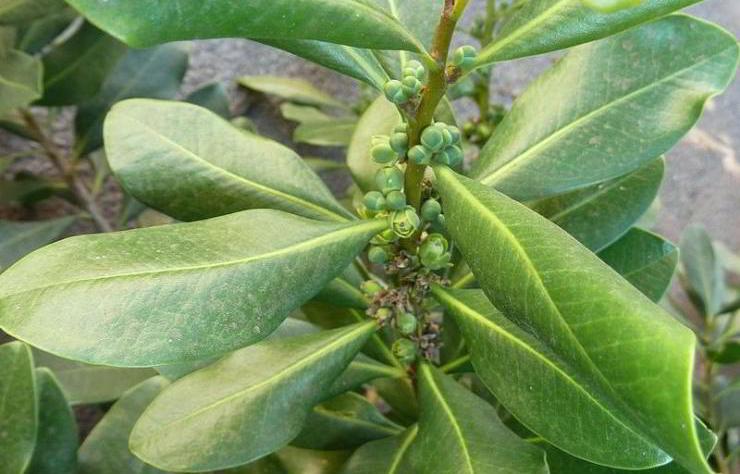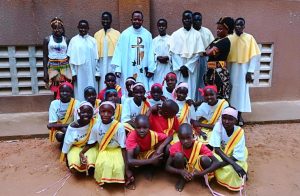It is also known as the “Uganda Green Heart Tree”. This evergreen tree is a dominant species in Uganda, Kenya and parts of Ethiopia. It is regarded as an essential element of African traditional medicine by many healers and herbalists across the continent.
The tree can grow to 5–30 m tall and 70 cm in diameter at breast height. Its bark is scaly and pale green to brown in colour, while its leaves are alternate, simple and dotted, with petioles that are 1–5 cm long. The flowers are small, 3–4-flowered cymes, white or greenish-yellow in colour.
The fruits are berries that are green when young, and later turn purplish, measuring about 3–5 cm in diameter when mature. The seeds are two or more, with oily endosperms that are yellow-brown in colour and about 1.0–1.5 cm long. Warburgia ugandensis is propagated by stem cuttings and also by seeds. Since it is a wild tree species, the saplings are usually protected within their natural habitats or transferred to farms for more intensive management.
Warburgia ugandensis is considered an integral part of African traditional medicine by many traditional healers and herbalists across the continent. All the plant parts are used in traditional medicine to treat several health conditions. Although the bark is the part most often used for herbal formulations, the leaves and roots are also highly medicinal.
In African traditional medicine, the bark is boiled with water to make a decoction or infusion taken orally to treat a myriad of conditions ranging from stomach ache to epilepsy, erectile dysfunction, skin infections and malaria. Patients are advised to chew the bark and swallow its juice for the treatment of constipation, venereal diseases, cough, fever, weak joints and general body pains.
Just a pinch of bark powder mixed with a spoonful of water, taken orally at prescribed intervals, can treat dry cough. Patients can also rub the powdered bark on the temples to treat headaches.
The stem bark is also powdered and added to porridge to prevent and treat gastric ulcers. In some instances, the bark is taken as tea to manage epilepsy, while powdered dry bark can be added to milk and soups to manage viral infections such as flu and influenza. Among the Maasai pastoralists of Kenya, the scraped bark is soaked in milk or water and taken orally to treat tuberculosis.
The leaves are boiled with bathing water to treat skin conditions such as scabies, ringworm and fungal infections. A mixture of leaves and stem bark boiled with water is traditionally used to treat asthma and bronchitis, while powdered root is applied to cavities in the teeth for the treatment of toothache.
Similarly, a mixture of the leaves, bark and roots is boiled with water to prepare a decoction taken orally to treat and prevent diarrhoea, malaria, chest pains, worm infections and headaches. However, high doses of this mixture have been reported to induce vomiting.
Apart from boiling with water or adding to milk and soup, other methods of preparation include smoke snuffing. In smoke snuffing, the plant part is burnt in a room, and the patient inhales the smoke at prescribed intervals to cure a given condition.
Scientific studies show that Warburgia ugandensis is rich in bioactive compounds such as alkaloids, sterols, triterpenes, flavonoids, cardiac glycosides, saponins and tannins, which have antimicrobial activity. Its use in the treatment of infectious diseases is associated with these compounds. Its bitter taste is also attributed to the presence of an alkaloid bioactive compound.
Since it is often the bark or roots that are used for their curative properties, a steady decline in wild populations is emerging in African countries due to over-harvesting and destructive harvesting techniques.
Consequently, this important medicinal tree is now listed on the International Union for Conservation of Nature (IUCN) Red List and categorised as a species vulnerable to extinction. People are now encouraged to establish private commercial plantations of Warburgia ugandensis to prevent overexploitation of wild populations.
In conclusion, Warburgia ugandensis has an illustrious history in African traditional medicine for a wide variety of health conditions, and traditional healers regard products from this plant very highly. Indeed, it is considered a miraculous plant in many communities across Africa.
(Komakech Richard & Omujal Francis — Photo: CC BY 3.0 / JMK)









